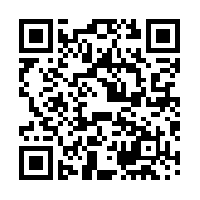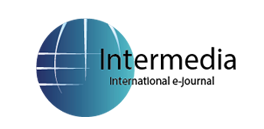Practices of Broadcast Media Usage in The Age of New Media: Evidence From Uganda
Abstract
The impact of new media is felt everywhere in the world and it has resulted to radical changes in the broadcast media in- dustry. The usage of new media has improved globally and African countries in particular have witnessed too the impact of new media. This study investigated practices of broadcast media usage in the age of convergent new media technologies and the impact of these patterns among the Ugandan youths. We employed both quantitative and qualitative methodologies. A total N=16 was interviewed and N=486 questionnaires were analyzed. All participants in this study were university students enrolled for the academic year 2019/2020 at two campuses, of the Islamic University in Uganda. Results show that mobile telephone is the most used tool of communication with an overall of 52.7% of the respondents spending more than 7 hours on telephone in a day. Yet 47.9% spent 1 to 3 hours watching TV daily. Radio was the least used media platforms as they spent less than one hour listening to radio. The study further exposed that 92.8% of the sample population possessed mobile pho- nes and listened to radio through it. The second most accessed and possessed device used in the reception of radio and TV was smartphones with 80.7% whereas TV sets were accessed by 70% of the informants and 69.1% revealed that they owned a radio set at their residence. The least accessed device were laptops and desktop where by only 47.7% accessed them. Pos- session of media devices was strongly correlated with the monthly income of the respondents, both at value P= .004 and P= .000 respectively. The study concluded that there is a paradigm shift in the usage of radio and TV from traditional reception to new media reception.
Full Text:
PDFReferences
Auverset, L., A. (2017). Social TV is the New Digital Watercooler: Personality Traits, Behaviours, and Trends in Second-Screen Media Activity. Dissertation. The University of Alabama. USA.
Barkhuus, L. and Brown, B. (2009). Unpacking the television: user practices around a changing technology. ACM Transactions on Computer-Human Interaction (TOCHI), 16 (3), 1–22.
Bernhaupt, R. (2010). Ethnographic insights on security, privacy, and personalization aspects of user interaction in interactive TV. Proceedings of the 8th international interactive conference on interactive TV & video – EuroITV’10. New York, NY: ACM Press, 187–196.
Conway, J. C., & Rubin, A. M. (1991). Psychological predictors of television viewing motivation. Communication Research, 18, 443–463. doi: 10.1177/009365091018004001
Fiske, J. (2002). Introduction to Communication Studies. 2nd Ed, London: Taylor & Francis.
Frey, L. R., & Cissna, N. K. (2009). Routledge Handbook of Applied Communication Research. New York: Taylor and Francis
Hanley, K. (2014) The New Newsroom: The Impact of Digital and Social Media on Local Television News Stations. (Master’s. Thesis), Drexel University, USA.
Haridakis, P. M. (2002). Viewer characteristics, exposure to television violence and aggression. Media Psychology, 4, 235–353. doi: 10.1207/S1532785XMEP0404_02
Hermida, A. (2010). Twittering the news. Journalism Practice, 4(3), 297e308.
Holton, A. E., & Chyi, H. I. (2012). News and the overloaded consumer: Factors influencing information overload among news consumers. Cyberpsychology, Behavior, and Social Networking, 15(11), 619e624.
Kakonage, J. (2013). The Role of The Media in Africa’s Development: From Vision To Reality. Global Media Journal, African Edition, 7(2):172-180.
Kasadha J. (2020). Does social media matter in developing democracies? Examining its impact on citizen political participation and expression in Uganda. Journal of Public Affairs. https://doi.org/10.1002/ pa.1981
Kırık, A. (2013). Conversion From Television To Internet In Turkey And The Position Of Young People In The Social Sharing Networks Within The Framework Of The New Media Age. (PhD Thesis), Marmara University, Turkey.
Kim, K. J., Sundar, S. S., & Park, E. (2011). The effects of screen-size and communication modality on psychology of mobile device users. Proceedings of the 2011 Annual Conference Extended Abstracts on Human Factors in Computing Systems (CHI EA’11), 1207–1212. doi: 10.1145/1979742.1979749
Lee, S. K., Lindsey, N. J., & Kim, K. S. (2017). The effects of news consumption via social media and news informa tion overload on perceptions of journalistic norms and practices. Computers in Human Behavior, 75, 254–263. https://doi.org/10.1016/j.chb.2017.05.007
Ley, B., Ogonowski, C., Hess, J., Reichling, T., Wan, L., & Wulf, V. (2014). Impacts of new technologies on media usage and social behavior in domestic environments. Behaviour and information technology, 33(8), 815-825.
Lull, J. (1991). Inside family viewing: ethnographic research on television’s audiences. London, UK: Routledge.
Marczyk, G., DeMatteo, D., & Festinger, D. (2005). Essentials of Research Design and Methodology. Hobo ken, NJ: John Wiley & Sons.
Nauman, S., I. (2017). News Usage Practices of Pakistani University Students in the Networked News Environment. University of Stirling: UK.
Odongo, B. D., (2012). Human Rights and Media in Uganda; A critical Analysis of the Mass Media Freedom (Master’s Thesis). University of Göteborg, Sweden.
Papacharissi, Z., & Mendelson, A. M. (2007). An exploratory study of reality appeal: Uses and gratification of reality TV shows. Journal of Broadcasting & Electronic Media, 52, 355–370. doi: 10.1080/08838150701307152
Perry, D. K. (2002). Theory and Research in Mass Communication: Contexts and Consequences (2nd ed.). Mahwah, New Jersey: Lawrence Erlbaum Associates.
Raacke, J., & Bonds-Raacke, J. (2008). Myspace and Facebook: Applying the uses and gratification theory to exploring friend-networking sites. Cyberpsychology & Behaviour, 169–174. doi: 10.1089/cpb.2007.0056
Rubin, A.M. (1981). An examination of television viewing motives. Communication Research, 8, 141–165.
Ruggiero, T. E. (2000). Uses and gratifications theory in the 21st century. Mass Communication & Society, 3, 3–37. doi: 10.1207/S15327825MCS0301_02
Smith, S.M. and Krugman, D.M., (2010). Exploring perceptions and usage patterns of digital video recorder owners. Journal of Broadcasting & Electronic Media, 54 (2),248–264.
So, J. (2012). Uses, gratifications, and beyond: Toward a model of motivated media exposure and its effects on risk perception. Communication Theory, 22, 116–137. doi: 10.1111/j.1468-2885.2012. 01400.x
Sundar, S. S., & Limperos, A., M. (2013) Uses and Grats 2.0: New Gratifications for New Media, Journal of Broadcasting & Electronic Media, 57:4, 504-525, DOI: 10.1080/08838151.2013.845827
Swart, J., Peters, C., & Broersma, M. (2016). Navigating cross-media news use: Media repertoires and the value of news in everyday life. Journalism Studies, (ahead-of-print), doi:10.1080/1461670X.2015.1129285.
Thompson, B. (2004). Exploratory and Confirmatory Factor Analysis: Understanding Concepts and Applications. American Psychological Association, Washington, DC.
UCC (2017, May, 01). Quarterly statistics on key communications indicators as of Dec 2016. Uganda Communications Commission. Retrieved from http://www.ucc.co.ug/files/down loads/Quarterly Statistics _on_Key_Communications_Indicators_as_of_Dec_2016.pdf
Wei, R., & Lo, V. (2006). Staying connected while on the move: Cell Phone use and social connectedness. New Media & Society, 8, 53–72. doi: 10.117/1461444806059870
West, R., & Turner, L. H. (2010). Introducing Communication Theory Analysis and Application (4th ed.). New York: McGraw-Hill.
Westerman, D., Spence, P., & Van Der Heide, B. (2014). Social media as information source: Recency of updates and credibility of information. Journal of Computer- Mediated Communication, 19(2), 171e183.
Zeng, L. (2011). More than audio on the go: Uses and gratifications of MP3 players. Communication Research Reports, 28, 97–108. doi
Refbacks
- There are currently no refbacks.
Copyright (c) 2020 Intermedia International e-Journal ISSN:2149-3669

This work is licensed under a Creative Commons Attribution-NonCommercial-NoDerivatives 4.0 International License.
Indexing and Abstracting Services
Mailing Address
 | Intermedia International e-Journal E-mail : intermedia@ticaret.edu.tr |
Intermedia International e-Journal ISSN:2149-3669

Bu eser Creative Commons Alıntı-GayriTicari-Türetilemez 4.0 Uluslararası Lisansı ile lisanslanmıştır.




